Do you want to reap the benefits of relaxation without the cost of a massage therapist? Learning how to massage the back of your head can help you do just that. In this article, we’ll show you how to use massage techniques to reduce stress, ease tension, and improve circulation in the neck and head area. With a few tips, you’ll be able to experience the therapeutic effects of self-massage right at home.
Contents
Anatomy of the Neck and Back of the Head
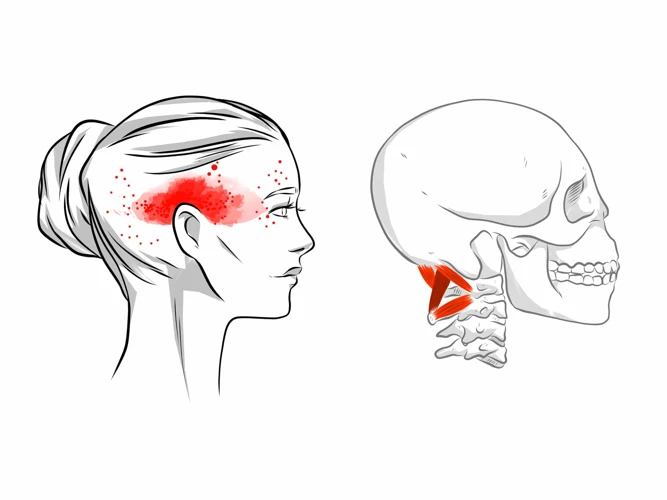
Head – The head consists of the scalp, face, and skull. The scalp is the outermost layer of the head and is composed of skin, hair, and sweat glands. The face is composed of facial bones, muscles, and nerves. Beneath the face is the skull, which is made up of the cranium and mandible.
Neck – The neck is made up of several vertebrae, muscles, nerves, and blood vessels. The cervical spine is composed of seven cervical vertebrae, which are connected by ligaments and muscles that provide stability and movement.
Upper Back – The upper back is made up of the trapezius and latissimus dorsi muscles, as well as the thoracic vertebrae. The latissimus dorsi is the largest back muscle and is responsible for extending and rotating the arms. The trapezius is a broad, flat muscle that runs from the neck to the mid-back and helps to stabilize the shoulder and neck.
Lower Back – The lower back is made up of the lumbar spine, which is composed of five lumbar vertebrae that are connected by ligaments and muscles. The lumbar spine is responsible for supporting the entire upper body, as well as providing the flexibility needed for posture and movement.
How to Massage the Back of Your Head – Massaging the back of the head can be beneficial for relieving tension and promoting relaxation. To massage the back of your head, start by making gentle circles with your thumbs on either side of your neck. Then, use your fingers to massage the base of your skull, as well as the sides of your neck and upper back. Finally, use your fingertips to knead the muscles of the lower back and neck.
Benefits of Massaging the Back of the Head
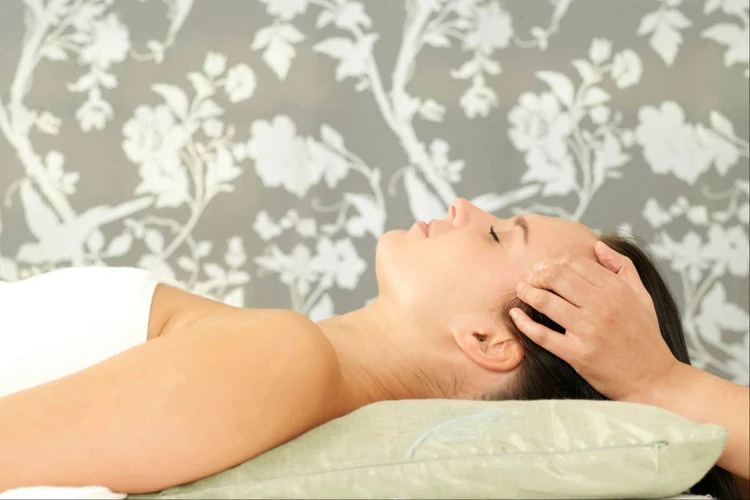
Relieves Stress – By massaging the back of the head, you can reduce stress levels. Massaging helps to reduce tension in the muscles in the head and neck area, which can lead to stress relief and improved relaxation.
Improves Circulation – Massaging the back of the head can help to improve circulation. Stimulating the scalp with massage can help to increase blood flow to the scalp and hair follicles, which can promote hair growth and reduce hair thinning.
Reduces Headaches – Massaging the back of the head can help to reduce headaches and tension headaches. The pressure of massage can help to reduce tension in the head and neck muscles, which can help to reduce the severity of headaches.
Promotes Relaxation – Massaging the back of the head can help to promote relaxation. Massage can help to reduce tension and stress, which can help to increase feelings of relaxation and reduce overall stress levels.
Improves Sleep Quality – Massaging the back of the head can help to improve sleep quality. Massage can help to reduce stress, reduce muscle tension, and improve circulation, which can all help to improve sleep quality.
How to Massage the Back of the Head
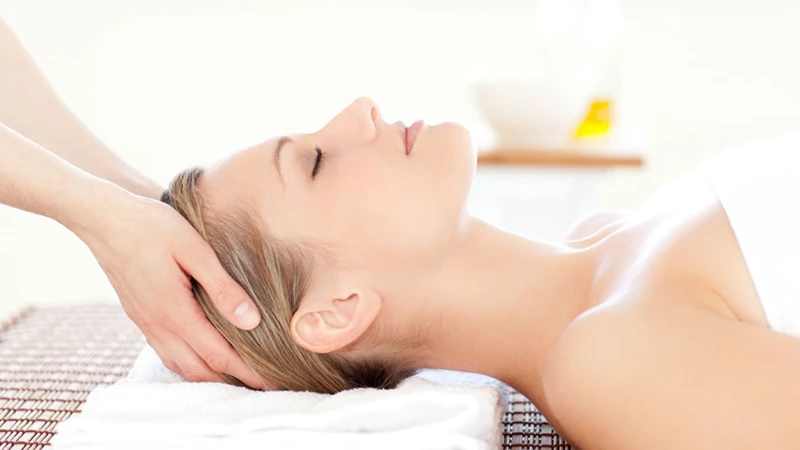
Preparing for the Massage
The most important part of any massage is to make sure you are comfortable. Start by finding a comfortable place to sit, such as a chair or sofa. If you’re lying down, make sure your head is supported and your neck is not strained. It’s also a good idea to take off any jewelry or clothing that may get in the way. Take a few deep breaths and relax before you start the massage.
Massage Techniques
Once you’re ready to begin, use your hands to massage the back of your head. Start at the base of your skull and move your hands up and down in a slow, circular motion. Make sure to use light pressure, as too much pressure can cause pain or discomfort. You can also gently massage your temples, ears, and jawline. Once you’re finished, take a few deep breaths and relax.
Massage Tools and Oils

Tools:
- Head Massager
- Massage Ball
- Massage Roller
- Massage Stick
- Massage Wand
Oils:
- Essential Oils
- Almond Oil
- Olive Oil
- Coconut Oil
- Avocado Oil
- Jojoba Oil
Massage tools and oils can be used to provide a relaxing and soothing massage. Head massagers, massage balls, rollers, sticks, and wands can be used to massage the back of the head, while essential oils, almond oil, olive oil, coconut oil, avocado oil, and jojoba oil can be used to help relax the muscles and reduce tension.
Tips for a Successful Massage
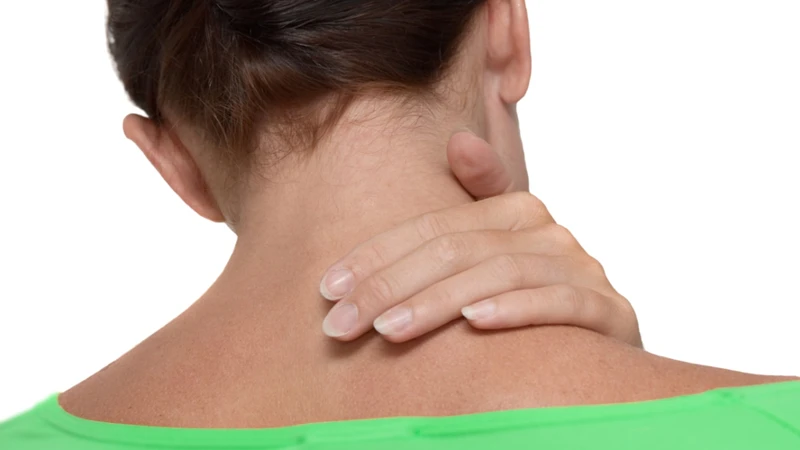
- Choose a comfortable position: When you are massaging the back of your head, it is important to choose a comfortable position that allows you to easily reach the area you are trying to massage. Consider sitting up or lying down on your back, allowing your head to rest on a pillow for support.
- Start slow: When massaging the back of your head, it is important to start slow. Use gentle pressure with your fingertips or knuckles and work your way up to more intense pressure. This will help you to avoid any potential discomfort or pain.
- Focus on areas of tension: When massaging the back of your head, focus on areas of tension. You can identify these areas by gently pressing with your fingertips and looking for areas of tightness or soreness. Use circular motions as you massage these areas to help relax the muscles.
- Avoid applying too much pressure: When you are massaging the back of your head, it is important to be mindful of how much pressure you are applying. Too much pressure can cause discomfort or pain and can even lead to injury. Instead, use light to moderate pressure and focus on areas of tension.
- Incorporate essential oils: Essential oils can be a great addition to your massage. The oils can help to relax the muscles and promote healing. You can add a few drops of essential oil to your fingertips or massage oil before you begin your massage.
- Be mindful of your breathing: It is important to be mindful of your breathing when you are massaging the back of your head. Focus on taking deep, slow breaths and avoid holding your breath. This can help to relax your body and mind, making the massage more effective.
- Know when to stop: It is important to know when to stop during a massage. If you start to feel discomfort or pain, stop immediately and allow your body to rest. Overworking an area can result in injury, so it is important to be mindful of your body’s signals.
When to Avoid Massaging the Back of the Head
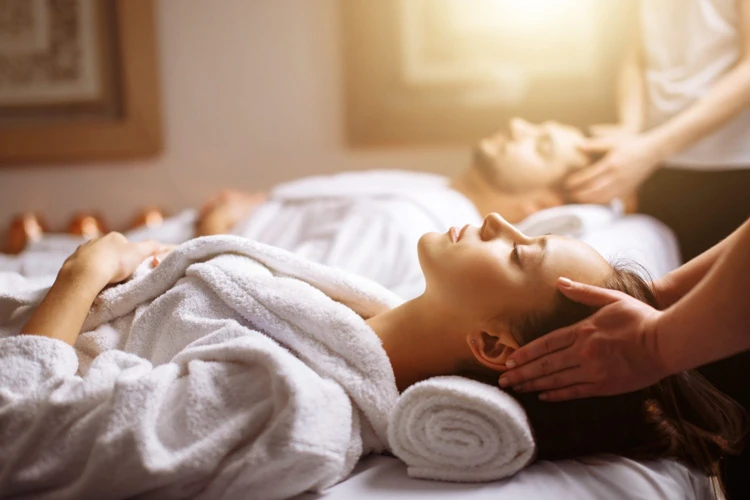
| Situation | Advice |
|---|---|
| Infected area | Avoid massage |
| Headaches | Avoid massage or consult doctor |
| Recent head injury | Avoid massage or consult doctor |
| High blood pressure | Consult doctor |
Massaging the back of your head can provide great relaxation, but it’s important to be aware of certain situations in which it’s best to avoid the technique. If the back of your head is infected or if you’re experiencing headaches, avoid massage and consult a doctor. If you’ve recently suffered a head injury, it’s best to avoid massage and consult a doctor. In cases of high blood pressure, it’s essential to consult a doctor before attempting any massage.
Treatments for Neck and Back Pain
- Chiropractic Care: Chiropractic care is the most common treatment for neck and back pain. Chiropractic adjustments help to reduce inflammation, improve mobility, and reduce pain.
- Acupuncture: Acupuncture is a Chinese medicine technique that involves inserting thin needles into specific points in the body. It helps to reduce pain, improve circulation, and promote relaxation.
- Massage Therapy: Massage therapy is another effective treatment for neck and back pain. It helps to reduce tension, improve flexibility, and increase blood flow to the affected area.
- Physical Therapy: Physical therapy helps to improve strength, flexibility, and range of motion. It can also help to reduce pain and improve function.
- Medication: Over-the-counter and prescription medications are often used to manage neck and back pain. Common medications used include NSAIDs, muscle relaxants, and narcotic pain relievers.
- Heat and Cold Therapy: Heat and cold therapy can help to reduce inflammation and provide pain relief. Heat therapy helps to increase circulation and relax muscles, while cold therapy helps to reduce swelling and numb the area.
Frequently Asked Questions
What are the Main Benefits of Head Massage?
Head massage can help reduce stress, tension and anxiety, improve circulation, alleviate headaches and migraines, reduce sinus pressure, and promote relaxation and overall wellbeing. It can also help to improve cognitive function and mental clarity, as well as to reduce fatigue and improve sleep patterns. Head massage can also help to improve the texture and condition of the hair, scalp and skin, as well as to reduce muscle tension.
How often should I get a head massage to maximize the benefits?
- Weekly: Getting a head massage once a week is a great way to maximize the benefits. This will help keep stress levels down, improve your quality of sleep, and provide a sense of calmness.
- Monthly: If you are not able to get a massage once a week, getting one every month is still beneficial. This will help to reset your body and mind, and can help you feel more relaxed.
- Whenever Necessary: If you are feeling particularly stressed or tense, getting a head massage can help relieve these symptoms. This can be done as often as needed to help restore balance to your body and mind.
Head massages are a great way to relax and reduce stress. However, it is important to get them on a regular basis in order to maximize the benefits. Depending on your needs, you may find that getting a massage once a week, once a month, or whenever necessary is the most beneficial.
Are There Any Potential Risks Associated With Head Massage?
Head massage may cause minor discomfort or pain if the pressure applied is too much. Some people may also experience dizziness or fatigue after a head massage. In rare cases, some people may also experience headaches, nausea, or even seizures due to strong pressure or stimulation to a particular area of the head. To avoid any potential risks, it is best to be gentle when massaging, and to avoid stimulating sensitive areas.
Is there any special technique for massaging the back of the head?
Yes, there is. Massaging the back of the head can be a great way to relax, reduce stress, and ease tension. Here are some techniques to help you get the most out of your massage:
- Circular motions: Use your fingertips to make circular motions with firm pressure on the back of the head. This will help to reduce any tension and promote relaxation.
- Scalp massage: Use your fingertips to massage the scalp in small circles, making sure to cover the entire area. This can help to reduce stress and tension.
- Neck massage: Use your fingertips to massage the neck in an outward motion, starting at the base of the neck and working your way up. This can help to reduce stiffness and soreness in the neck.
- Finger tapping: Use your fingertips to lightly tap the back of the head in a rhythmic motion. This can help to reduce stress and tension in the head and neck.
- Shoulder massage: Use your fingertips to massage the shoulders in an outward motion, starting at the base of the neck and working your way down. This can help to reduce tension and soreness in the shoulders.
By using these techniques, you can help to reduce stress and tension in the head and neck, promoting relaxation and wellbeing.
What are the best oils for head massage?
For a head massage, the best oils are those that are lightweight and easily absorbed. Popular choices include jojoba, coconut, almond, and avocado oil. Each of these has its own unique benefits and can be used to promote relaxation and soothe the scalp. Essential oils such as lavender, chamomile, and rosemary can be added to these to create a calming blend.
Conclusion
Massaging the back of your head can provide numerous benefits, including improved relaxation and tension relief. This massage technique is easy to learn and can be done in the comfort of your own home. Incorporating regular head massage into your relaxation routine can help you to reduce stress and anxiety, improve sleep quality and help you to become more mindful.
References
- Massage Therapy Fact Sheet (National Institute of Neurological Disorders and Stroke)
- The effects of massage therapy on relaxation: a systematic review and meta-analysis (Pubmed)
- Massage Therapy: Benefits, Risks and Types (Hospital for Special Surgery)

